
Disaster Podcast
Jamie Davis, Sam Bradley, Joe Holley, Kyle Nelson
The show for first responders to major incidents worldwide.
- 35 minutes 42 secondsCalifornia Wildfires and Disaster Messaging
 On this week’s episode, Dan DePodwin joins us to discuss the unique weather implications surrounding the widespread wildfires hitting the Los Angeles area this week. We discuss Santa Ana winds and the source in the mountain deserts around the Four Corners region of the Southwest.
On this week’s episode, Dan DePodwin joins us to discuss the unique weather implications surrounding the widespread wildfires hitting the Los Angeles area this week. We discuss Santa Ana winds and the source in the mountain deserts around the Four Corners region of the Southwest.Then co-hosts Sam Bradley and Jamie Davis look at wildfire preparedness, emergency evacuation on a moment’s notice, and the need for a go bag. When the orders to leave come in, we all need to have a list of needed items and supplies for a quick bug out from our homes. This includes everything we need for our pets, medications, and a supply of water and food in cast we’re away for an extended period of time.
Scroll down for Podcast Discussion Summary
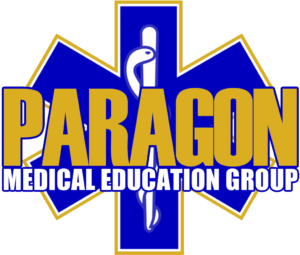 Thank you as always to Paragon Medical Education Group for their long-term support of the Disaster Podcast. Dr. Joe Holley and the team at Paragon continue to provide excellent and customized disaster response training to jurisdictions around the U.S. and internationally as well.
Thank you as always to Paragon Medical Education Group for their long-term support of the Disaster Podcast. Dr. Joe Holley and the team at Paragon continue to provide excellent and customized disaster response training to jurisdictions around the U.S. and internationally as well.Podcast Discussion Summary
Upcoming Weather Events and Wildfires Jamie, Sam, and Dan discuss upcoming weather events and wildfires. Sam mentions that they have snow but no fire, which is a good thing. The three hosts plan to talk about wildfire scenarios and preparedness, but also touch on other weather topics. Sam asks Dan if there is anything notable in the upcoming weather outlook for the next week or so. La Nina’s Impact on Wildfires Discussed Dan discussed the ongoing cold weather in the Eastern United States and the snow and ice storm from Texas through Oklahoma and Arkansas. He also mentioned the potential for a disruptive snow event in the southeast and Ohio Valley. Jamie confirmed that Maryland would experience snow from the same storm system. Sam and Jamie discussed the arrival of La Nina, which is expected to have an impact on the wildland fire situation in Southern California. They noted that the fires have already caused significant damage, with 6 deaths, over 6,000 structures burned, and 180,000 residents under evacuation orders. The fires have the potential to be the costliest wildland fire in American history and the most destructive fire in L.A. history. Los Angeles Wildfires and Air Quality Sam and Dan discussed the severe air quality situation in the Los Angeles area due to the ongoing wildfires. They noted that the air quality was unhealthy, with a rating of 173, and that the smoke and ash had contaminated water supplies, leading to boiling restrictions in some areas. Dan emphasized that the poor air quality could cause significant side effects, even for healthy individuals, and that it was not just a local issue but affected a vast stretch of Southern California. Jamie shared a personal experience of friends evacuating their homes due to poor air quality, despite not being under evacuation orders. The conversation concluded with Dan explaining that the fire weather was expected to continue, with the wind event being a rare occurrence that significantly increased the risk of fire spread. Southern California Wind Situation Discussed Dan discussed the ongoing wind situation in Southern California, noting that while the winds were expected to die down, there could be an increase in gustiness in the coming days. He also mentioned the potential for another round of strong winds next week. Sam shared her familiarity with Santa Ana winds, which can gust between 70 and 100 miles per hour. Jamie highlighted the unique challenges posed by the Wildland/urban interface, where homes burn, releasing toxic fumes into the air and water supply. Dan agreed, noting the increasing concern with fires spreading from wildland areas to urban or suburban areas. The group also discussed the unusual timing of the current fires, which typically occur in the fall but are happening in the early part of the year due to a year and a half of wetter than average conditions followed by no rain. Sam added that there have been 60,000 fires since 2001, with the fastest growing ones causing more destruction than the slower, larger blazes. Challenges in Wildfire Evacuation Procedures Sam, Jamie, and Dan discussed the challenges faced during the wildfires in La County. They highlighted the lack of information about evacuation procedures and the difficulty in evacuating people due to the speed of the fires and the limited number of roads. Jamie mentioned that the La Fire Department and Cal Fire had to clear abandoned cars from the roads to allow fire vehicles to access the fires. Dan noted the erratic fire behavior caused by the winds and the difficulty in proactively evacuating areas. The team agreed that managing such emergencies is a complex task, especially in rapidly evolving situations. Preparing for Wildfires and Evacuations Jamie and Sam discussed the challenges faced during the recent wildfires, particularly the erratic spread of fires and the difficulty in evacuating due to limited access routes. They emphasized the importance of planning and preparation for such events, including creating a Wildland Action Plan, clearing brush around homes, and signing up for text alerts about wildfires. Dan agreed with their points, adding that having a plan and packing essentials in advance can be crucial during significant fire events. Emergency Preparedness Kit Discussion In the meeting, Sam and Dan discussed the importance of having a preparedness kit in the car in case of emergencies such as wildfires. They emphasized the need for items like medications, extra glasses, and important documents. Jamie added that having a checklist and knowing where to find everything quickly is crucial. They also discussed the importance of having a communication plan with family members, especially during emergencies when phone lines and cell towers may be down. Sam mentioned the 6 P’s of evacuation, which include people, pets, papers, phone numbers, papers and important documents, and personal items. Dan agreed that these tips are applicable to various hazards, not just wildfires. Jamie recommended checking the Cal fire site for more information and resources.10 January 2025, 11:39 am - 40 minutes 58 seconds2024 on the Disaster Podcast Episode Retrospective
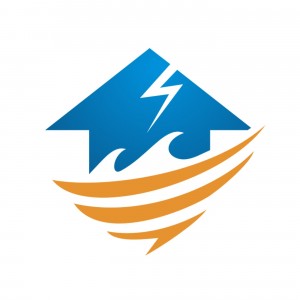 Our amazing Disaster Podcast team got together this week to share their favorite episodes from 2024. We covered a lot of topics and disaster responses over the previous year but there were a few standouts for each of us.
Our amazing Disaster Podcast team got together this week to share their favorite episodes from 2024. We covered a lot of topics and disaster responses over the previous year but there were a few standouts for each of us.Becky shared her picks first. She loved our annual “Stump Dan with obscure weather terms” episode. She also mentioned our mental health for first responders episode featuring Dr. Genie Burnett. There was the episode on a Dulles Airport mass casualty drill that Becky and Dan participated in as patients. Her last pick featured Dan Zehner from NHERI who talked about disaster resilient construction and wildfires.
Dan seconded several of the same episodes as Becky did. He also added in the episode we did on the basis of the long term hurricane forecasts. We talked about how forecasters try to nail down the approaching hurricane season months ahead of time each year.
Kyle put the Colorado Avalanche Rescue Dog Training episode at the top of his list. Who could fault him. The dog in question, Ruby, is a cutie. He also mentioned the episode Dr. Joe headed up on the fallout from the Elijah McClain homicide trial where two EMS providers were found guilty in the patient’s death.
Kyle and Jamie both recommended our report from the field with Dr. Joe Holley on the North Carolina Hurricane Helene response and follow up. Dr. Joe also mentioned our ongoing reports from organizations working to assist Ukrainian medical professionals in their efforts to take care of patients. The first episode was on Med Global’s Ukraine Mission. Our other episode for Ukraine response was on educating nurses and doctors in Ukraine with IDMC volunteers.
Jamie added the episodes on Geohazard Mitigation. The first featured a look at one company’s efforts to support critical infrastructure when endangered by soil erosion and mudslides. He specifically liked their Soil Nail Launcher technology. There was also the follow-up episode with Dan Zehner that looked at NHERI’s research on geohazard mitigation.
Finally, co-host Sam Bradley shared her picks. Her first was the Bullets and Bandaids project episode. She also recommended the episode on Connecting Public-Private Sector Partnerships with Healthcare Ready.
And, it wouldn’t be a Disaster Podcast retrospective if we didn’t remember our all-time favorite and quirky episode. Dr. Joe’s now famous discussion on why a foley catheter was a must-have piece of survival gear to have in one’s kit.
This episode was co-hosted by Sam Bradley and Jamie Davis.
Scroll down for Podcast Discussion Summary
Thanks for your support in listening to the show. Don’t forget to subscribe using the links above near the audio player on this page or in the sidebar to the right. Thank you as always to Paragon Medical Education Group for their long-term support of the Disaster Podcast. Dr. Joe Holley and the team at Paragon continue to provide excellent and customized disaster response training to jurisdictions around the U.S. and internationally as well.4 January 2025, 12:28 pm
Thank you as always to Paragon Medical Education Group for their long-term support of the Disaster Podcast. Dr. Joe Holley and the team at Paragon continue to provide excellent and customized disaster response training to jurisdictions around the U.S. and internationally as well.4 January 2025, 12:28 pm - 29 minutes 58 secondsHoliday and Winter Weather Travel Preparedness Update
 With the approaching holidays here at the end of December, along with the accompanying winter storms tracking across the midwest and into the northeast, it’s important to review preparedness and travel warnings for your region. Becky DePodwin, our disaster emergency management expert, joins us to cover some of the weather and preparedness concerns.
With the approaching holidays here at the end of December, along with the accompanying winter storms tracking across the midwest and into the northeast, it’s important to review preparedness and travel warnings for your region. Becky DePodwin, our disaster emergency management expert, joins us to cover some of the weather and preparedness concerns.Dr. Joe Holley shares some updates on winter respiratory virus season. This includes a brief update on some Bird Flu cases in humans that are causing public health officials in parts of the country on their toes. The team shares a reminder it’s not too late to get your COVID, Flu, and RSV vaccines if you’re eligible.
This episode was co-hosted by Sam Bradley and Jamie Davis.
Scroll down for Podcast Discussion Summary
 Thank you as always to Paragon Medical Education Group for their long-term support of the Disaster Podcast. Dr. Joe Holley and the team at Paragon continue to provide excellent and customized disaster response training to jurisdictions around the U.S. and internationally as well.
Thank you as always to Paragon Medical Education Group for their long-term support of the Disaster Podcast. Dr. Joe Holley and the team at Paragon continue to provide excellent and customized disaster response training to jurisdictions around the U.S. and internationally as well.Podcast Discussion Summary
Preparing for Cold Weather Travel Becky discussed the cold weather forecast for the eastern half of the country, advising travelers to be prepared with blankets, jackets, and good footwear. She mentioned that the Pacific Northwest could experience rain, wind, and snow, while the northeast might see rain and snow in higher elevations. Jamie shared his friend’s experience with strong winds and power outages in Washington State. The team also discussed their own experiences with cold weather and the upcoming Christmas weekend. Joe mentioned a new addition to his family, a dog that he had recently taken in. The conversation ended with a suggestion to discuss cold weather preparations. Combating Multiple Viruses and Health Issues Sam, Joe, and Jamie discussed the current health issues, particularly the combination of influenza, RSV, Covid, and bird flu. Joe highlighted the severity of the flu this year and the importance of vaccination. Jamie mentioned that flu and Covid can be administered simultaneously. Sam and Jamie shared their recent experiences with RSV and flu. Joe explained that the bird flu has been associated with dairy cattle and has raised concerns among health professionals. The group also discussed the potential for multiple viruses to be present in the body at the same time, which can make treatment more challenging. Joe mentioned that treatment usually involves managing respiratory symptoms and, in some cases, specific medications for each virus. Preparing for Cold Weather Safety In the meeting, the team discussed the importance of being prepared for cold weather. Joe emphasized the need to pay attention to various factors such as humidity, wind, and clothing when outdoors in cold conditions. Becky advised dressing in layers, keeping extremities warm, and having a blanket, food, and water in the car in case of being stuck. She also stressed the importance of checking the weather forecast and having a good weather app. Jamie highlighted the need to consider the specific needs of individuals, especially the young and the old, when traveling in cold weather. The team also discussed the importance of having a shovel in the car in case of getting stuck in snow. New Year’s Plans and Updates In the meeting, Sam, Jamie, Joe, and Becky discussed their plans for the upcoming New Year’s weekend and the holidays. Jamie emphasized the importance of being prepared for potential travel disruptions and checking with local emergency management experts for updates. Joe shared that he has three scheduled events in January, all related to EMS. The team also discussed their support for the Paragon Medical Education group and encouraged listeners to share their favorite episodes of the disaster podcast. Joe also mentioned his plans to adopt a new puppy, which sparked interest from the others. The conversation ended with the team wishing each other a Merry Christmas and expressing their anticipation for the New Year.20 December 2024, 4:17 pm - 46 minutes 27 secondsColorado Avalanche Rescue Dog Training with Carl Kishbaugh
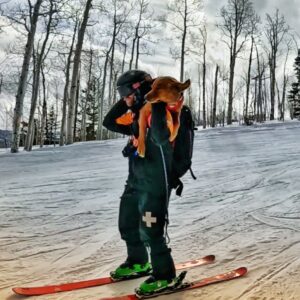 Our ski patrol and disaster meteorology expert, Kyle Nelson, comes by the episode tonight with fellow snow and mountain rescue expert Carl Kishbaugh. Karl is a ski-patroller with years of experience in mountain and ski-lift rescue as well as avalanche dog handling. Ruby, his avalanche search and rescue dog, recently trained with he and Kyle on helicopter acclimation and landing zone handling.
Our ski patrol and disaster meteorology expert, Kyle Nelson, comes by the episode tonight with fellow snow and mountain rescue expert Carl Kishbaugh. Karl is a ski-patroller with years of experience in mountain and ski-lift rescue as well as avalanche dog handling. Ruby, his avalanche search and rescue dog, recently trained with he and Kyle on helicopter acclimation and landing zone handling.Colorado Avalanche Dog Article
Doctor Joe Holley joins the conversation with questions about Ruby’s training. His experience with USAR dogs extends to his wife Kimberly Holley and her three trained USAR dogs. The episode is hosted by Jamie Davis. Co-host Sam Bradley is on a much-needed episode away.
Photo Credits: Kyle Nelson
Scroll down for Podcast Discussion Summary
 Thank you as always to Paragon Medical Education Group for their long-term support of the Disaster Podcast. Dr. Joe Holley and the team at Paragon continue to provide excellent and customized disaster response training to jurisdictions around the U.S. and internationally as well.
Thank you as always to Paragon Medical Education Group for their long-term support of the Disaster Podcast. Dr. Joe Holley and the team at Paragon continue to provide excellent and customized disaster response training to jurisdictions around the U.S. and internationally as well.Podcast Discussion Summary
Ski Patrol Operations and Dispatch Carl Kishbaugh, a ski patrol member, discussed the operations of his team. He explained that they are dispatched based on the nature of the call, with the level of trauma or medical need determining the response. They operate under the same medical protocol as the local county’s ambulance, fire, and mountain rescue services. Carl also detailed how they are contacted, with guests on the mountain knowing which ski patrol to call or calling 911, which then directs the call to their dispatch. He mentioned that they have radios and phones on lifts for communication and that cell phone coverage is improving. In cases where further advice or direction is needed, they can call the hospital directly or relay through their dispatch. Jamie and Kyle confirmed Carl’s explanations. Joe asked about the dispatch process, and Carl clarified that they are contacted through various means, including cell phones and radios. Search and Rescue Dogs Importance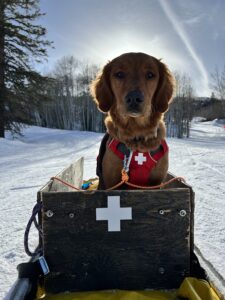 Carl discussed the importance of search and rescue dogs in their operations, highlighting their superior capabilities compared to other resources like avalanche beacons and probe lines. He explained the process of acquiring a rescue dog, starting with an internal application process within the company, followed by certification through the Colorado Rescue Avalanche Dog program. He also shared his experience with Ruby, a Scottish field golden retriever, which he obtained from a breeder known for producing dogs suitable for search and rescue tasks.
Ruby’s Pack Drive and Training
Carl shared his experiences with his two dogs, Ruby and his 12-year-old husky. He described Ruby as a pack-driven dog, meaning she is highly motivated to please her pack and will strive to do so. This trait has been beneficial in training Ruby, as she responds well to positive reinforcement and is eager to please.
Carl emphasized the importance of not shaming Ruby for her mistakes, but instead refocusing her energy into good behavior. He also mentioned that Ruby’s pack drive is her strongest instinct, and she understands when she has done something wrong. Carl’s observations on Ruby’s pack drive have been insightful and have helped him train her effectively.
Dog Breeds and Training Differences
Carl discussed the importance of search and rescue dogs in their operations, highlighting their superior capabilities compared to other resources like avalanche beacons and probe lines. He explained the process of acquiring a rescue dog, starting with an internal application process within the company, followed by certification through the Colorado Rescue Avalanche Dog program. He also shared his experience with Ruby, a Scottish field golden retriever, which he obtained from a breeder known for producing dogs suitable for search and rescue tasks.
Ruby’s Pack Drive and Training
Carl shared his experiences with his two dogs, Ruby and his 12-year-old husky. He described Ruby as a pack-driven dog, meaning she is highly motivated to please her pack and will strive to do so. This trait has been beneficial in training Ruby, as she responds well to positive reinforcement and is eager to please.
Carl emphasized the importance of not shaming Ruby for her mistakes, but instead refocusing her energy into good behavior. He also mentioned that Ruby’s pack drive is her strongest instinct, and she understands when she has done something wrong. Carl’s observations on Ruby’s pack drive have been insightful and have helped him train her effectively.
Dog Breeds and Training Differences
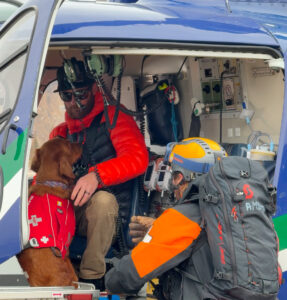 In the meeting, Carl and Joe discussed their experiences with different dog breeds, particularly Malinois and Labradors. They highlighted the unique characteristics of each breed, with Malinois being highly intelligent and driven, while Labradors are more docile and adaptable. Joe shared his experience with his Malinois, who requires daily stimulant drugs to manage her high drive. Carl emphasized the importance of not shaming or disciplining dogs for their behavior, but rather refocusing them. The conversation also touched on the differences in training needs for various breeds, with Carl noting that Malinois are highly trainable and intelligent, but may require more direction than other breeds.
Training Ruby for Avalanche Rescue
Jamie, Carl, and Kyle discussed the training of Ruby, an avalanche rescue dog. Carl explained the various training methods they use, including behavioral training and avalanche drills. He detailed how they progress from simple drills to more complex ones, such as hiding Kyle in a shallow snow grave and training Ruby to locate him.
Kyle emphasized the importance of training the handler as much as the dog, and how weather conditions affect the search. Joe agreed, highlighting the importance of the handler’s role in interpreting the dog’s actions. The team concluded that understanding the dog’s behavior and the handler’s role is crucial for successful avalanche rescue operations.
Upcoming Projects and Ski Patroller Expert
In the meeting, Jamie and Joe discussed upcoming projects and events, including a National Association of EMS Physicians (NAEMSP) event and an evaluation of new products for hemorrhage control. They also mentioned the 11th year of production for the disaster podcast.
Kyle shared his social media handles and mentioned his Instagram account for winter updates. Carl, a guest speaker, offerred to share his expertise and experience as a ski patroller and lift evacuation coordinator on a future episode. The team agreed to have Carl back to discuss more about his technical rescue work.13 December 2024, 8:35 am
In the meeting, Carl and Joe discussed their experiences with different dog breeds, particularly Malinois and Labradors. They highlighted the unique characteristics of each breed, with Malinois being highly intelligent and driven, while Labradors are more docile and adaptable. Joe shared his experience with his Malinois, who requires daily stimulant drugs to manage her high drive. Carl emphasized the importance of not shaming or disciplining dogs for their behavior, but rather refocusing them. The conversation also touched on the differences in training needs for various breeds, with Carl noting that Malinois are highly trainable and intelligent, but may require more direction than other breeds.
Training Ruby for Avalanche Rescue
Jamie, Carl, and Kyle discussed the training of Ruby, an avalanche rescue dog. Carl explained the various training methods they use, including behavioral training and avalanche drills. He detailed how they progress from simple drills to more complex ones, such as hiding Kyle in a shallow snow grave and training Ruby to locate him.
Kyle emphasized the importance of training the handler as much as the dog, and how weather conditions affect the search. Joe agreed, highlighting the importance of the handler’s role in interpreting the dog’s actions. The team concluded that understanding the dog’s behavior and the handler’s role is crucial for successful avalanche rescue operations.
Upcoming Projects and Ski Patroller Expert
In the meeting, Jamie and Joe discussed upcoming projects and events, including a National Association of EMS Physicians (NAEMSP) event and an evaluation of new products for hemorrhage control. They also mentioned the 11th year of production for the disaster podcast.
Kyle shared his social media handles and mentioned his Instagram account for winter updates. Carl, a guest speaker, offerred to share his expertise and experience as a ski patroller and lift evacuation coordinator on a future episode. The team agreed to have Carl back to discuss more about his technical rescue work.13 December 2024, 8:35 am - 48 minutes 39 secondsDisaster Pre-Planning and Community and Responder Preparedness
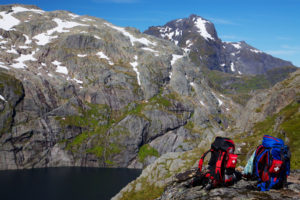 We start off today’s episode discussing recent projects with our Disaster Weather Expert, Kyle Nelson. He recently engaged in a training exercise as an avalanche search and rescue dog handler where they introduced the dogs to riding in a helicopter and learning operations around aviation assets.
We start off today’s episode discussing recent projects with our Disaster Weather Expert, Kyle Nelson. He recently engaged in a training exercise as an avalanche search and rescue dog handler where they introduced the dogs to riding in a helicopter and learning operations around aviation assets.Then Henry Mitchell joined the show and we switched gears to discuss emergency planning and management of diverse community resources to prepare to respond to emergencies and disaster situations. Henry is Deputy Director Office of Emergency Preparedness Response in the Colorado Department of Public Health and Environment. He holds an MS Emergency Response and Biosecurity and specialized for a time in Disaster Behavioral Health.
Henry dives into the necessary needs when bringing together different groups and response organizations like public health assets, emergency response organizations, and community volunteers. Planning ahead can help make future events run more smoothly.
Kyle introduced the acronym CMIST which revolves around response to help diverse and special needs communities. CMIST stands for:
- Communication
- Maintaining health
- Independence
- Support, Safety, and Self-determination
- Transportation
We also discuss the need for constructive or creative outlets away from our work in emergency response. Henry uses music and participation in theater and dramatic endeavors. We point out the necessity for having positive ways to work out the vicarious trauma we experience during work in the field.
Scroll down for Podcast Discussion Summary
 Thank you as always to Paragon Medical Education Group for their long-term support of the Disaster Podcast. Dr. Joe Holley and the team at Paragon continue to provide excellent and customized disaster response training to jurisdictions around the U.S. and internationally as well.
Thank you as always to Paragon Medical Education Group for their long-term support of the Disaster Podcast. Dr. Joe Holley and the team at Paragon continue to provide excellent and customized disaster response training to jurisdictions around the U.S. and internationally as well.Podcast Discussion Summary
Avalanche Training and Emergency Management Kyle shared his recent experience at the International Association of Emergency Managers Conference in Colorado Springs, where he met Becky DePodwin face-to-face for the first time. He also discussed his involvement in dog avalanche training and search and rescue operations, including a recent helicopter training session. Sam introduced Henry Mitchell, who was recommended by Kyle, as the deputy director of the Office of Emergency Preparedness Response in the Colorado Department of Public Health and Environment. Henry shared his background in disaster, behavioral health, and emergency management. Emergency Operation Planning and Coordination Sam, Henry, and Jamie discussed their experiences and expertise in emergency operation planning. Henry shared his passion for plan writing and reviewing, emphasizing the importance of understanding the assets and capabilities of different groups involved in a response or operational action. He also highlighted the value of pre-planning and coordination with various agencies to ensure effective collaboration. The conversation also touched on the importance of reviewing plans to identify what worked and what didn’t, and how to improve for future situations. Additionally, they briefly discussed climate adaptation planning from a public health perspective. Public Health in Disaster Response Henry discussed the importance of public health in disaster response, particularly in relation to extreme heat. He proposed strategies to bolster community preparedness and response efforts, including utilizing federal partners to monitor potential heat waves and forming a communications plan to educate the community. He also highlighted the need to focus on vulnerable populations, such as residents of long-term care facilities, the elderly, and those with certain medical conditions or medications that make them more susceptible to heat. Sam agreed with Henry’s thoughts. Emergency Planning and Preparedness Kyle discussed the importance of planning and preparedness for emergencies, using the CMIST memory tool as an example. He emphasized the need for individuals and communities to be prepared for disasters, especially in the face of a changing climate. Jamie then asked Henry about his approach to helping local jurisdictions with their planning needs. Henry explained that he uses his experience as a local emergency manager to understand the specific needs of each jurisdiction and to help them plan effectively. He also highlighted the importance of cross-pollination of ideas and resources from other jurisdictions and levels of government. Sam then asked Henry about his training in nonviolent de-escalation, which Henry explained was useful in facilitating community meetings and responding to disasters. The discussion concluded with Sam asking Henry about increasing community preparedness at the individual and family level, to which Henry responded that even a small increase in preparedness could significantly improve response times. Preparing for Disasters and Support In the meeting, Henry discussed the importance of being prepared for disasters, emphasizing the need for people to have essential items like extra clothing, food, and water in their cars. He also highlighted the importance of having a backup plan for important documents and banking information. Henry shared his personal experiences with disaster response and how it has shaped his views on preparedness. He also mentioned his passion for theater and DJing as outlets for stress and trauma. Jamie and Sam agreed with Henry’s points and discussed the importance of peer support programs for responders. They also thanked Dr. Joe Holley for his continued support of the podcast.29 November 2024, 10:14 am - 35 minutes 31 secondsConnecting Public-Private Sector Partnerships with Healthcare Ready
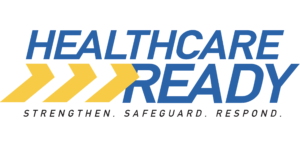 Tom Cotter, MPH, serves as executive director of Healthcare Ready, bringing more than a decade of global health readiness and response expertise to expand nonprofit’s mission-driven work addressing health equity.
Tom Cotter, MPH, serves as executive director of Healthcare Ready, bringing more than a decade of global health readiness and response expertise to expand nonprofit’s mission-driven work addressing health equity.Healthcare Ready is a nonprofit organization established in 2007 to help strengthen the US healthcare system and assist all communities in planning for, responding to, and recovering from disasters and disease pandemics.
Tom brings his experience with international and domestic emergency response to the challenges of accessing needed supplies and resources during major incidents. Healthcare Ready acts as a bridge to forge public and private partnerships to get needed items to the responders and healthcare professionals who need them.
On the show in addition to our guest were co-hosts Sam Bradley and Jamie Davis.
Scroll down for Podcast Discussion Summary
 Thank you as always to Paragon Medical Education Group for their long-term support of the Disaster Podcast. Dr. Joe Holley and the team at Paragon continue to provide excellent and customized disaster response training to jurisdictions around the U.S. and internationally as well.
Thank you as always to Paragon Medical Education Group for their long-term support of the Disaster Podcast. Dr. Joe Holley and the team at Paragon continue to provide excellent and customized disaster response training to jurisdictions around the U.S. and internationally as well.Podcast Discussion Summary
Improving Healthcare Response Amid Crises
In the meeting, Jamie Davis, the host of the podcast, introduced the topic of the day, which was about how to get things done in their jobs. He then brought in his co-host, Sam Bradley, who mentioned that there would be snow in the Front Range the next day. The meteorologists weren’t present during the recording, so they planned to catch up with them later in the week. Tom Cotter, the executive director of a nonprofit called Healthcare Ready, joined the conversation. He explained that his organization serves as a public-private partnership to avoid patient disruptions amid crisis by forging partnerships between the healthcare supply chain and government. Tom also shared his background in international and domestic emergency response work, including experiences with polio outbreaks and typhoons.
Healthcare Access During Disasters Discussed
Tom discussed the mission of his organization, Healthcare Ready, which aims to ensure good access to healthcare during disasters. He emphasized the importance of a needs-based approach, particularly for historically underserved communities. Tom also mentioned that the organization responds to non-traditional events, such as logistics strikes, which disproportionately affect certain communities. Sam and Jamie agreed with Tom’s points, highlighting the importance of empowering the healthcare workforce and connecting in times of need.
Improving Mental Health and Resilience
Jamie and Tom discussed the lessons learned from the pandemic and how they can be applied to improve mental health support and community resilience. Tom emphasized the need for increased funding in public health resilience and the importance of leveraging both communities and the private sector as a force multiplier. He also highlighted the need for a wider view of healthcare infrastructure, including not just hospitals but also urgent care centers. Tom mentioned that Healthcare Ready is training community health center workers to be more resilient during emergencies, with the goal of minimizing closure times and reducing financial strain on patients.
Improving Clinic and Pharmacy Resilience
Tom and Sam discussed strategies for improving clinic and pharmacy resilience, particularly in the face of disasters. Tom highlighted the challenges faced by smaller community pharmacies due to limited resources and the need to understand their networks for effective resiliency. He mentioned partnerships with organizations like the National Association of Chain Drugstores and the website RxOpen.org to help patients and healthcare providers navigate the status of pharmacies during disasters. Jamie raised concerns about public trust in health initiatives, questioning if healthcare is involved in efforts to rebuild this trust. Tom acknowledged the issue but did not provide a specific solution.
Community Leaders and Telehealth Impact
Tom emphasized the importance of community leaders in delivering messages and building trust, citing examples from international health spaces. He also highlighted the effectiveness of telehealth in reducing health disparities and improving access to healthcare, particularly in rural areas and during disasters. Jamie agreed with Tom’s points and suggested that Tom could be a guest on their show to discuss his work and partnerships further. Sam expressed appreciation for Tom’s insights and the potential for future discussions.
22 November 2024, 10:17 am - 42 minutes 48 secondsNHERI Deploys Resources in Advance of Hurricanes with Dan Zehner
 The National Science Foundation NHERI (Natural Hazards Engineering Research Infrastructure) organization had teams out in advance of the recent hurricanes to strike Florida. They set up for the Sentinel Program from the University of Florida to use sensor platforms to detect all the various forces from incoming storms. This was the first full deployment of the Sentinel system.
The National Science Foundation NHERI (Natural Hazards Engineering Research Infrastructure) organization had teams out in advance of the recent hurricanes to strike Florida. They set up for the Sentinel Program from the University of Florida to use sensor platforms to detect all the various forces from incoming storms. This was the first full deployment of the Sentinel system.The teams were struck by the destruction to the communities when they returned to collect the Sentinel sensor platforms. While their storm sensors were in pretty good shape, the surrounding communities hadn’t fared as well, with some totally destroyed.
Dan also talked about the new planned Wind-Wave research facility with the NICHE Project (National Full-Scale Testing Infrastructure for Community Hardening in Extreme Wind, Surge, and Wave Events). This new multi-story laboratory will be able to do full scale materials and structural testing based upon wind and flood water events.
Scroll down for Podcast Discussion Summary
 Thank you as always to Paragon Medical Education Group for their long-term support of the Disaster Podcast. Dr. Joe Holley and the team at Paragon continue to provide excellent and customized disaster response training to jurisdictions around the U.S. and internationally as well.
Thank you as always to Paragon Medical Education Group for their long-term support of the Disaster Podcast. Dr. Joe Holley and the team at Paragon continue to provide excellent and customized disaster response training to jurisdictions around the U.S. and internationally as well.Podcast Discussion Summary
Joe’s FEMA Deployment Experiences
In the meeting, Sam and Jamie welcomed back Joe from his FEMA deployment and discussed his experiences during Hurricane Helene and Hurricane Milton. Joe shared that his team was deployed to North Carolina, Tennessee, South Carolina, and Florida, where they conducted rescue operations and located remains for families. They also discussed the challenges and stress of the deployment. Sam expressed interest in conducting a longer podcast with Joe and Kimberly, who was also deployed. Dan was also present, and it was mentioned that he would be discussing some research information related to the article Sam received.
Sentinel Project Enhances Hurricane Data
Sam and Dan discussed the Sentinel project, a research initiative by the University of Florida to set up store monitoring equipment that collects data on wind, storm surge, waves, and water equality before, during, and after a hurricane. The Sentinel is a 33-foot tall device that reports data back to researchers in real time, providing valuable insights into environment, structural, and human survival. Dan highlighted the project’s collaboration with other teams, including the University of Washington, and the use of various technologies such as Lidar and drones. The Sentinel’s ability to withstand 16 feet of storm surge and provide accurate wind speed measurements, even over terrain, was emphasized as a significant improvement over traditional wind towers. The data collected by the Sentinel was used by Noah in an official update, demonstrating its immediate impact.
Hurricane Impact and Coastal Infrastructure
In the meeting, Sam, Dan, Joe, and Jamie discussed the aftermath of Hurricane Florence and the impact of storms on coastal communities. They highlighted the importance of data collection and analysis to improve infrastructure resilience and inform rebuilding efforts. Dan mentioned the role of new sensor platforms in gathering valuable data, and Jamie expressed interest in the relationship between field work and lab work. They also discussed the potential for learning from inland flooding events and the importance of understanding coastal erosion and sediment movement. The conversation ended with Dan sharing some data sets from Hurricane Helene, which included high water marks from North Carolina and Virginia.
NSF Invests in Extreme Weather Facility
Dan discussed the National Science Foundation’s (NSF) investment of 12.8 million dollars in a Mid-scale research infrastructure program, the first of its kind for a natural hazards laboratory. The program, called Niche, aims to design and test structures to withstand extreme wind and wave events. The facility will feature 20 fans capable of generating wind speeds of up to 200 miles per hour and a 500-meter-long wave flume that can generate waves up to 5 meters tall. Jamie and Sam expressed their excitement about the project, with Jamie noting that the facility will include a full-scale two-story home for testing storm surge and wind effects.
World’s Largest Wind and Wave Facility
The team discussed the development of a world’s largest wind and wave research facility, similar to Japan’s e-defense facility for earthquake engineering. Dan explained that the facility is currently in the design phase, with 11 universities and organizations involved. The team is also upgrading several facilities, including the Wall of Wind at Fiu and the Oregon State University wave flume, to test various parts of the niche design before spending more money on the actual build. The team agreed that full-scale testing with all three elements of the structure (wind, waves, and structure) is necessary due to the increasing intensity and number of storms. Dan also mentioned that the collected data is freely available for researchers to use in their investigations and to inform their tests in wind tunnels or wave labs.
Natural Hazards Research and Support
In the meeting, Sam, Dan, Joe, and Jamie discussed the ongoing research and collaborations in natural hazards, particularly in the context of recent storms. Dan highlighted the support from the US National Science Foundation and the importance of the network provided by Mary. Joe mentioned his upcoming training sessions in Florida and the opportunity for others to attend the Urban Search and Rescue Medical Specialist Operations Conference. Jamie encouraged listeners to subscribe to the Design Safe Radio podcast for updates on Neri’s work. The team also discussed Dan’s colleague, Marty Lashanz, who is the communications director at Neri. Dan shared that his wife, Tracy, is undergoing surgery for breast cancer treatment, and the team expressed their support and well wishes.
15 November 2024, 10:42 am - 40 minutes 8 secondsZeroeyes Active Shooter Detection/Prevention Software
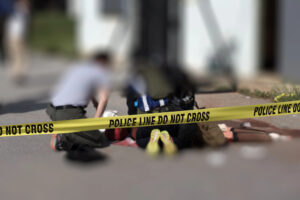 Today on the Disaster Podcast brings on a technology story built around the tragedy of school shootings in the U.S. The founders determined that it might be possible to detect the presence of active shooter before they began to fire their weapons. If advanced AI tech could identify the shooter before shots were fired, then lives could be saved, by early alerting of the target organization and police agencies.
Today on the Disaster Podcast brings on a technology story built around the tragedy of school shootings in the U.S. The founders determined that it might be possible to detect the presence of active shooter before they began to fire their weapons. If advanced AI tech could identify the shooter before shots were fired, then lives could be saved, by early alerting of the target organization and police agencies.ZeroEyes technology delivers a proactive, human-verified visual gun detection and situational awareness solution. It integrates into existing digital security cameras on a site to stop mass shootings and gun-related violence. Jonathan Norton, VP of Commercial Sales for ZeroEyes comes on the show to talk about their ground-breaking software and human verification service that completes the process to eliminate false positives causing needless lockdowns.
Also on the show is meteorologist and disaster technology expert Kyle Nelson, along with co-hosts Sam Bradley and Jamie Davis.
Scroll down for Podcast Discussion Summary
 Thank you as always to Paragon Medical Education Group for their long-term support of the Disaster Podcast. Dr. Joe Holley and the team at Paragon continue to provide excellent and customized disaster response training to jurisdictions around the U.S. and internationally as well.
Thank you as always to Paragon Medical Education Group for their long-term support of the Disaster Podcast. Dr. Joe Holley and the team at Paragon continue to provide excellent and customized disaster response training to jurisdictions around the U.S. and internationally as well.Podcast Discussion Summary
Jon Norton, VP of commercial sales at ZeroEyes, will be the guest on the disaster podcast to discuss his company’s technology. Sam and Kyle provide weather updates, including an early season snowstorm in the Central Rockies and dry conditions in the northern plains.
ZeroEyes: Origin and Security Insights
Jon shared his background, having served on active duty in the army for 6 and a half years and then working at ZeroEyes for almost 3 years. Sam expressed interest in Jon’s military background and its relevance to security issues. Jon then discussed the origin of ZeroEyes, which was born out of the tragic Marjory Stoneman Douglas High School shooting in 2018. The company’s founder, Mike Laif, was inspired to create ZeroEyes after his daughter came home from school distraught following a lockdown drill. Jon explained that their research showed that active shooter events often have a common pattern, with the shooter brandishing their firearm in full view of cameras before entering the building. This early indicator could potentially prevent future tragedies.
Addressing Security Limitations and Proactive Solutions
Jon discussed the limitations of current security measures in preventing shootings, particularly in the logistics industry where most incidents occur outside and involve employees. He highlighted the issue of employees being aware of security postures and working around them. ZeroEyes introduced a proactive solution using digital IP cameras to turn existing security cameras into sensors that can detect visible guns, providing early warning to law enforcement and first responders. Sam expressed her appreciation for this approach, emphasizing the importance of protecting first responders and the potential of this technology to prevent damage.
Addressing Security Challenges in Hospital Networks
Jon discussed the challenges faced by security directors at large hospital networks, such as Hackensack Meridian, in effectively responding to incidents due to the lack of real-time monitoring and the inability to implement active shooter lockdown procedures. He highlighted the advantage of using ZeroEyes, which extends the security perimeter out to the furthest camera view, providing early warning and proactive implementation of emergency response plans. Sam agreed, noting the extensive reach of the Hackensack Meridian’s camera network. Jon then explained the workflow of ZeroEyes, including the verification of alerts in their operations center and the dispatch of alerts to law enforcement. He emphasized their goal of saving lives and preventing suffering from gun-related violence. Sam expressed interest in the potential users for this system.
Integration of Technology With Alerting Systems
Kyle asked Jon about the integration of their technology with existing alerting systems on campuses, such as Alertus. Jon confirmed that they integrate with any open API platform, including virtual management systems and mass notification systems. He emphasized the importance of key leaders being alerted proactively upon the presence of a gun, allowing them to make effective decisions. Jamie asked about the process of integrating with existing processes when onboarding a new client, to which Jon explained that it starts with a compatibility audit and involves acquiring necessary data like camera location and IP address.
System Effectiveness and Integration in Facilities Security
Jon discussed the effectiveness of their system in protecting clients and ensuring their facilities are secure. He mentioned that they conduct practice drills for active shooter scenarios in various facilities, including schools, corporate, and government facilities. Jon also highlighted the importance of integrating their system with existing tools and procedures, and the need for training to ensure employees’ safety. Kyle asked about the system’s deployment in outdoor events and temporary facilities, to which Jon responded that they have contracts with the Department of Defense to develop the platform for various markets, including commercial and military. Jon also mentioned their involvement in protecting an F1 (Formula One) event and a fallen Service Members’ annual run.
Mobile Analytics Integration and Safety Act Recognition
Jon discussed the integration of their analytics platform onto mobile platforms, which would enhance their clients’ security and extend the detection window for events. Sam highlighted the company’s recognition as a promising anti-terrorism technology by the Department of Homeland Security, having achieved the full designation under the Safety Act. Jon emphasized the importance of this designation, as it validates the company’s claims and provides end users with confidence in the platform’s effectiveness in their environments.
1 November 2024, 9:11 am - 37 minutes 10 secondsCitizen Cardiac Arrest Response with Pulsepoint
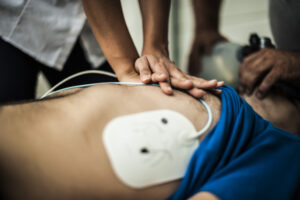 Former San Ramon Valley Fire Chief Richard Price was having lunch one day when he saw one of his engines stopping in front of the restaurant. Someone in an adjacent business had suffered a cardiac arrest.
Former San Ramon Valley Fire Chief Richard Price was having lunch one day when he saw one of his engines stopping in front of the restaurant. Someone in an adjacent business had suffered a cardiac arrest.What really bothered him was that he, a trained responder was only yards away and he had an AED in his vehicle. Had he been alerted, he could have provided care much sooner than waiting for the responding professionals.
That moment was the genesis of what would become PulsePoint. This incident left the Chief wondering if technology could produce a way for CPR trained civilians to be notified of an arrest near them and advised of the location of an AED.
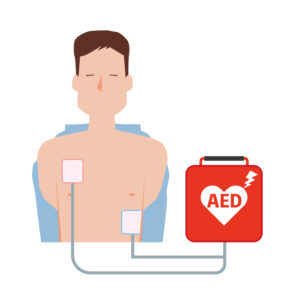 This program has grown astronomically since it’s inception. Technology has improved with next gen devices that can detect cardiac arrest, a large AED registry that supports the program and dispatch collaboration. If you ever wanted to be involved in saving a life, PulsePoint may provide the opportunity.
This program has grown astronomically since it’s inception. Technology has improved with next gen devices that can detect cardiac arrest, a large AED registry that supports the program and dispatch collaboration. If you ever wanted to be involved in saving a life, PulsePoint may provide the opportunity.PulsePoint is a 501(c)(3) non-profit; unique due to history starting in a fire department with university partner. The two main initiatives of the foundation:
Sudden Cardiac Arrest Awareness Month
Contact PulsePoint at [email protected]
 Thank you as always to Paragon Medical Education Group for their long-term support of the Disaster Podcast. Dr. Joe Holley and the team at Paragon continue to provide excellent and customized disaster response training to jurisdictions around the U.S. and internationally as well.25 October 2024, 9:17 am
Thank you as always to Paragon Medical Education Group for their long-term support of the Disaster Podcast. Dr. Joe Holley and the team at Paragon continue to provide excellent and customized disaster response training to jurisdictions around the U.S. and internationally as well.25 October 2024, 9:17 am - 52 minutes 52 secondsMed Global’s Ukraine Mission
 Tim Conley and Dr. Kateryna Riabko from Med Global to talk about the training mission they worked on together in Ukraine. Med Global provides surgical and nursing training along with equipment training with things like ultrasound devices. They also work to train medical staff on chemical weapons that might be released during the war there.
Tim Conley and Dr. Kateryna Riabko from Med Global to talk about the training mission they worked on together in Ukraine. Med Global provides surgical and nursing training along with equipment training with things like ultrasound devices. They also work to train medical staff on chemical weapons that might be released during the war there.The training in what is called “dry decon” or decontamination without water. Research has showed that everyday medial supplies can be used to wipe down patients who have been affected by chemical weapons or exposures. Towels, surgical or trauma dressings, gauze, chucks, or other common medical supplies can be used to remove contaminants
There have been confirmed examples of use of some banned chemicals and irritants by Russian troops in the eastern parts of Ukraine on the front lines there. There have also been reports of chemical leaks caused by air raids on specific civilian infrastructure in several cities.
Find out how to support Med Global in a variety of ways. You can visit Med Global’s Help page and find the method that best matches your skills and resources.
Also on the show were co-hosts Sam Bradley and Jamie Davis.
 Thank you as always to Paragon Medical Education Group for their long-term support of the Disaster Podcast. Dr. Joe Holley and the team at Paragon continue to provide excellent and customized disaster response training to jurisdictions around the U.S. and internationally as well.18 October 2024, 9:48 am
Thank you as always to Paragon Medical Education Group for their long-term support of the Disaster Podcast. Dr. Joe Holley and the team at Paragon continue to provide excellent and customized disaster response training to jurisdictions around the U.S. and internationally as well.18 October 2024, 9:48 am - 18 minutes 1 secondHelene Response Update with Dr. Joe Holley in the FieldDisaster Podcast host Sam Bradley reached out and connected with Dr. Joe Holley while deployed in the field. Joe has been hard at work with the FEMA IST (Federal Emergency Management Agency Incident Support Team) while they supported teams in the field for Hurricane Helene. He and his wife Kimberly are currently in North Carolina finishing up the immediate search and rescue support for that region.9 October 2024, 1:35 am
- More Episodes? Get the App
Your feedback is valuable to us. Should you encounter any bugs, glitches, lack of functionality or other problems, please email us on [email protected] or join Moon.FM Telegram Group where you can talk directly to the dev team who are happy to answer any queries.
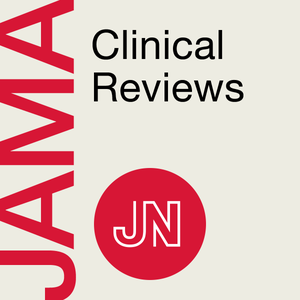 JAMA Clinical Reviews
JAMA Clinical Reviews
 Casual Preppers Podcast - Prepping, Survival, Entertainment.
Casual Preppers Podcast - Prepping, Survival, Entertainment.
 Fieldcraft Survival
Fieldcraft Survival
 The Art of Manliness
The Art of Manliness
 Pioneering Today
Pioneering Today
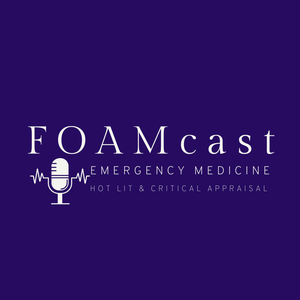 FOAMcast - An Emergency Medicine Podcast
FOAMcast - An Emergency Medicine Podcast